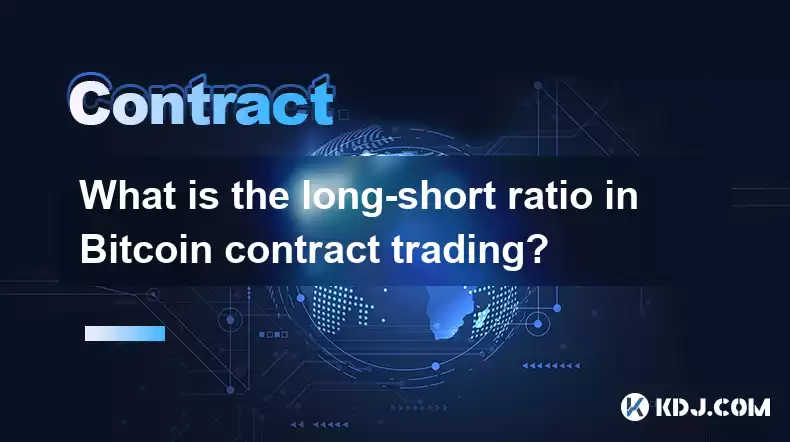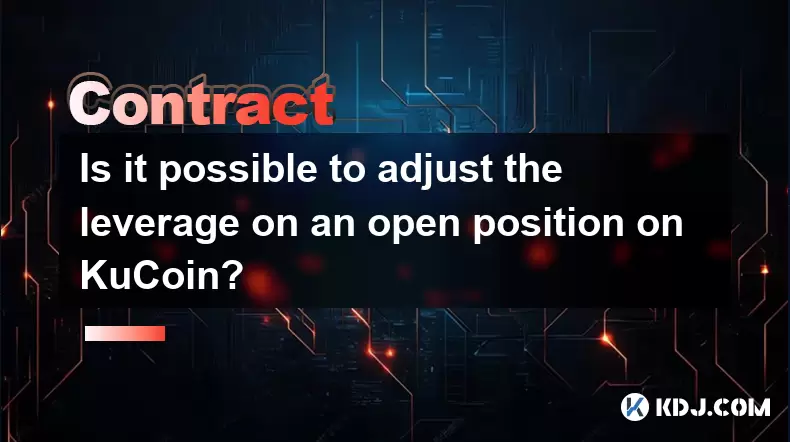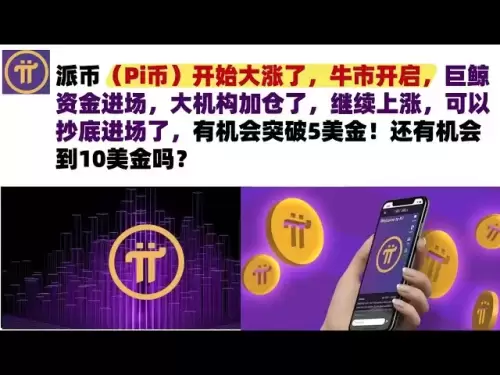-
 Bitcoin
Bitcoin $116900
0.00% -
 Ethereum
Ethereum $4280
5.48% -
 XRP
XRP $3.265
-1.45% -
 Tether USDt
Tether USDt $1.000
-0.01% -
 BNB
BNB $807.0
1.41% -
 Solana
Solana $183.1
2.93% -
 USDC
USDC $0.9999
0.00% -
 Dogecoin
Dogecoin $0.2440
6.50% -
 TRON
TRON $0.3357
-0.88% -
 Cardano
Cardano $0.8178
2.63% -
 Hyperliquid
Hyperliquid $44.13
7.45% -
 Chainlink
Chainlink $21.39
9.09% -
 Stellar
Stellar $0.4524
-0.84% -
 Sui
Sui $3.957
2.13% -
 Bitcoin Cash
Bitcoin Cash $572.7
-2.54% -
 Hedera
Hedera $0.2671
1.54% -
 Avalanche
Avalanche $24.77
4.17% -
 Ethena USDe
Ethena USDe $1.001
0.02% -
 Litecoin
Litecoin $122.3
-1.94% -
 Toncoin
Toncoin $3.432
2.26% -
 UNUS SED LEO
UNUS SED LEO $9.007
0.49% -
 Shiba Inu
Shiba Inu $0.00001396
5.26% -
 Uniswap
Uniswap $11.09
1.64% -
 Polkadot
Polkadot $4.155
4.57% -
 Dai
Dai $1.000
0.00% -
 Pepe
Pepe $0.00001253
5.11% -
 Cronos
Cronos $0.1588
2.67% -
 Bitget Token
Bitget Token $4.512
0.05% -
 Monero
Monero $275.0
0.64% -
 Ethena
Ethena $0.7527
15.10%
What is the long-short ratio in Bitcoin contract trading?
The Bitcoin long-short ratio, calculated by dividing long positions by short positions, indicates market sentiment; a high ratio suggests bullishness, while a low ratio suggests bearishness. However, this indicator, prone to manipulation and biases, shouldn't be used alone for trading decisions.
Feb 28, 2025 at 04:36 pm

What is the Long-Short Ratio in Bitcoin Contract Trading?
Key Points:
- Definition: The long-short ratio in Bitcoin contract trading represents the proportion of traders holding long positions (betting on price increases) versus those holding short positions (betting on price decreases). It's a crucial sentiment indicator offering insights into market dynamics and potential price movements. A high ratio suggests bullish sentiment, while a low ratio indicates bearish sentiment. However, it's crucial to remember that this is just one indicator among many and should not be used in isolation.
- Calculation and Data Sources: The ratio is typically calculated by dividing the number of long contracts by the number of short contracts. Data sources vary depending on the exchange; some provide publicly available data, while others may only offer it to their professional clients. Variations exist in the calculation methodology, especially regarding how to handle leveraged positions and whether to include all open contracts or just a subset (e.g., only contracts exceeding a certain size).
- Interpretation and Limitations: While a high ratio generally signifies bullish sentiment and a low ratio bearish sentiment, interpreting the ratio requires careful consideration of several factors. Market manipulation, wash trading, and the presence of large institutional investors can significantly skew the ratio, rendering it less reliable. Furthermore, the ratio alone cannot predict future price movements; it's merely one piece of the puzzle in a comprehensive trading strategy.
- Practical Applications: Traders use the long-short ratio alongside other technical and fundamental indicators to gauge market sentiment and inform their trading decisions. It can help identify potential overbought or oversold conditions, but it's crucial to remember that these conditions can persist for extended periods. Combining the ratio with price action analysis, volume analysis, and other indicators provides a more holistic view of the market.
Understanding the Long-Short Ratio in Bitcoin Contract Trading
- The Mechanics of Long and Short Positions: In Bitcoin contract trading, a long position is established when a trader believes the price of Bitcoin will rise. They agree to buy Bitcoin at a specified price at a future date. If the price rises as anticipated, the trader profits. Conversely, a short position is taken when a trader anticipates a price decline. They essentially borrow Bitcoin, sell it at the current market price, and hope to buy it back at a lower price in the future to return the borrowed Bitcoin and keep the difference as profit. The complexity increases significantly with the introduction of leverage, allowing traders to control larger positions with a smaller initial investment, magnifying both potential profits and losses. Understanding the mechanics of margin trading and liquidation is critical for navigating the risks associated with leveraged positions. Many exchanges offer tutorials and risk management tools to educate traders on these aspects. Failure to understand these mechanics can lead to substantial financial losses. The impact of leverage on the long-short ratio is often overlooked. A small number of highly leveraged long positions can significantly inflate the ratio, potentially misrepresenting the overall market sentiment.
- Data Sources and Calculation Variations: The long-short ratio is not a standardized metric; its calculation and availability vary across different cryptocurrency exchanges. Some exchanges provide this data publicly on their websites, often updated in real-time or with a slight delay. Others may only make it available to their professional or institutional clients, often through proprietary trading platforms and data feeds. Even among exchanges that publicly report the ratio, inconsistencies may exist. For example, the definition of a "long" or "short" position might differ depending on whether the exchange considers only outright positions or includes leveraged positions. Some calculations might focus only on the largest contracts or filter out certain types of trading activity to reduce the impact of wash trading or market manipulation. Consequently, traders should be aware of the specific methodology used by the exchange when interpreting the ratio. Comparing the long-short ratio across different exchanges can be misleading unless the underlying methodologies are consistent. Furthermore, the data's accuracy depends on the exchange's ability to detect and filter out manipulative trading activities.
- Interpreting the Ratio and its Limitations: A high long-short ratio (e.g., a ratio of 2:1, meaning twice as many long positions as short positions) generally suggests a predominantly bullish market sentiment. Conversely, a low ratio (e.g., 0.5:1, indicating more short positions than long positions) points to a bearish sentiment. However, this interpretation should not be taken as an absolute predictor of future price movements. The ratio only reflects the current sentiment of market participants; it does not guarantee that the price will move in the direction of the prevailing sentiment. Several factors can influence the ratio's reliability. For instance, large institutional investors can significantly skew the ratio, making it less representative of the overall market sentiment. Similarly, market manipulation, including wash trading (creating artificial volume through self-dealing), can distort the true picture. The ratio should be viewed as one piece of the puzzle, used in conjunction with other indicators and analyses. Over-reliance on the long-short ratio alone can lead to inaccurate trading decisions and potential losses.
- Practical Applications in Bitcoin Trading Strategies: The long-short ratio can be a valuable tool when incorporated into a broader trading strategy. Traders can use it to identify potential overbought or oversold conditions. For instance, an extremely high long-short ratio might suggest that the market is becoming overbought, indicating a potential pullback. Conversely, an extremely low ratio could signal an oversold condition, potentially suggesting a price bounce. However, it is important to remember that overbought or oversold conditions can persist for extended periods, especially in volatile markets like cryptocurrencies. The ratio is more effective when used in conjunction with other indicators, such as technical indicators (e.g., moving averages, RSI, MACD) and fundamental analysis (e.g., news events, regulatory changes, adoption rates). By combining the ratio with other tools, traders can develop a more comprehensive understanding of market dynamics and make more informed trading decisions. The ratio should be considered a complementary indicator, not the sole determinant of trading strategy. It's crucial to develop a risk management plan to mitigate potential losses, regardless of the signals from the long-short ratio.
FAQs
Q: How often is the long-short ratio updated?
A: The frequency of updates varies depending on the exchange providing the data. Some exchanges update the ratio in real-time, while others update it every few minutes or even hourly. It's crucial to check the specific exchange's information for accurate update frequency.
Q: Does the long-short ratio predict future price movements?
A: No, the long-short ratio does not directly predict future price movements. It's a sentiment indicator that reflects the current market sentiment but does not guarantee future price direction. Other factors, such as news events, regulatory changes, and overall market conditions, also significantly impact Bitcoin's price.
Q: How can I find the long-short ratio for Bitcoin contracts?
A: The availability of the long-short ratio varies across exchanges. Some exchanges publicly display it on their websites, often within their trading interface or market data sections. Others might provide it through API access or to their institutional clients only. You'll need to check the specific exchange you're interested in to determine its availability.
Q: What are the potential biases in the long-short ratio?
A: Several biases can affect the long-short ratio's accuracy. Wash trading, market manipulation by large players, and the inclusion or exclusion of leveraged positions can all distort the true market sentiment reflected in the ratio. It's essential to be aware of these potential biases and interpret the ratio cautiously.
Q: Can I use the long-short ratio alone to make trading decisions?
A: No, relying solely on the long-short ratio for trading decisions is highly risky. It's crucial to incorporate other technical and fundamental analysis methods, risk management strategies, and a comprehensive understanding of market dynamics before making any trading decisions. The long-short ratio is just one tool in a larger toolkit.
Q: How does leverage affect the long-short ratio?
A: Leverage magnifies both profits and losses. A small number of highly leveraged long positions can significantly inflate the long-short ratio, potentially misrepresenting the overall market sentiment. Conversely, highly leveraged short positions can significantly depress the ratio. Therefore, it's crucial to understand the level of leverage used by traders when interpreting the ratio. Exchanges may or may not differentiate between leveraged and unleveraged positions in their calculations.
Q: Are there other similar indicators to the long-short ratio?
A: While the long-short ratio is a key sentiment indicator, other indicators provide complementary information. These include open interest, funding rates (for perpetual contracts), and various other technical indicators that analyze price action and volume. Using a combination of indicators provides a more robust assessment of market sentiment and potential price movements.
Q: What are the risks associated with using the long-short ratio in trading?
A: The primary risks involve misinterpreting the ratio due to biases or using it as the sole basis for trading decisions. Incorrect interpretation can lead to losses. Additionally, the ratio does not account for unforeseen market events that can significantly impact Bitcoin's price, regardless of the prevailing sentiment. Therefore, a robust risk management plan is crucial when using this indicator.
Disclaimer:info@kdj.com
The information provided is not trading advice. kdj.com does not assume any responsibility for any investments made based on the information provided in this article. Cryptocurrencies are highly volatile and it is highly recommended that you invest with caution after thorough research!
If you believe that the content used on this website infringes your copyright, please contact us immediately (info@kdj.com) and we will delete it promptly.
- Trump, Nasdaq, and Token Treasury: WLFI's $1.5B Gambit
- 2025-08-10 06:50:12
- Trump, Nasdaq, and Token Treasury: WLFI's $1.5B Play
- 2025-08-10 06:30:11
- Coinbase, DEX Trading, and Base Network: A New Era for Crypto?
- 2025-08-10 06:30:11
- Block Inc., Bitcoin, and Mining Chips: Reshaping Digital Finance, New York Style
- 2025-08-10 06:50:12
- Stablecoin Surge Ignites Altcoin Investment Hunt: What's Hot Now?
- 2025-08-10 06:55:16
- Penny Crypto Dreams: Can XRP Reach $10,000? A Look at LILPEPE and the Meme Coin Mania
- 2025-08-10 04:50:11
Related knowledge

Is it possible to adjust the leverage on an open position on KuCoin?
Aug 09,2025 at 08:21pm
Understanding Leverage in KuCoin Futures TradingLeverage in KuCoin Futures allows traders to amplify their exposure to price movements by borrowing fu...

What is the difference between realized and unrealized PNL on KuCoin?
Aug 09,2025 at 01:49am
Understanding Realized and Unrealized PNL on KuCoinWhen trading on KuCoin, especially in futures and perpetual contracts, understanding the distinctio...

How does KuCoin Futures compare against Binance Futures in terms of features?
Aug 09,2025 at 03:22am
Trading Interface and User ExperienceThe trading interface is a critical component when comparing KuCoin Futures and Binance Futures, as it directly i...

How do funding fees on KuCoin Futures affect my overall profit?
Aug 09,2025 at 08:22am
Understanding Funding Fees on KuCoin FuturesFunding fees on KuCoin Futures are periodic payments exchanged between long and short position holders to ...

What is the distinction between mark price and last price on KuCoin?
Aug 08,2025 at 01:58pm
Understanding the Basics of Price in Cryptocurrency TradingIn cryptocurrency exchanges like KuCoin, two key price indicators frequently appear on trad...

What are the specific maker and taker fees on KuCoin Futures?
Aug 08,2025 at 08:28am
Understanding Maker and Taker Fees on KuCoin FuturesWhen trading on KuCoin Futures, users encounter two primary types of fees: maker fees and taker fe...

Is it possible to adjust the leverage on an open position on KuCoin?
Aug 09,2025 at 08:21pm
Understanding Leverage in KuCoin Futures TradingLeverage in KuCoin Futures allows traders to amplify their exposure to price movements by borrowing fu...

What is the difference between realized and unrealized PNL on KuCoin?
Aug 09,2025 at 01:49am
Understanding Realized and Unrealized PNL on KuCoinWhen trading on KuCoin, especially in futures and perpetual contracts, understanding the distinctio...

How does KuCoin Futures compare against Binance Futures in terms of features?
Aug 09,2025 at 03:22am
Trading Interface and User ExperienceThe trading interface is a critical component when comparing KuCoin Futures and Binance Futures, as it directly i...

How do funding fees on KuCoin Futures affect my overall profit?
Aug 09,2025 at 08:22am
Understanding Funding Fees on KuCoin FuturesFunding fees on KuCoin Futures are periodic payments exchanged between long and short position holders to ...

What is the distinction between mark price and last price on KuCoin?
Aug 08,2025 at 01:58pm
Understanding the Basics of Price in Cryptocurrency TradingIn cryptocurrency exchanges like KuCoin, two key price indicators frequently appear on trad...

What are the specific maker and taker fees on KuCoin Futures?
Aug 08,2025 at 08:28am
Understanding Maker and Taker Fees on KuCoin FuturesWhen trading on KuCoin Futures, users encounter two primary types of fees: maker fees and taker fe...
See all articles

























































































